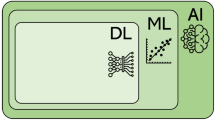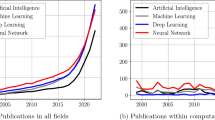Abstract
In this paper, we introduce a machine learning-based simulation framework of general-purpose multibody dynamics (MBD). The aim of the framework is to construct a well-trained meta-model of MBD systems, based on a deep neural network (DNN). Since the main advantage of the meta-model is the enhancement of computational efficiency in returning solutions, the modeling would be beneficial for solving highly complex MBD problems in a short time. Furthermore, for dynamics problems, not only the accuracy but also the smoothness in time of motion solutions, such as displacement, velocity, and acceleration, are essential aspects to consider. We analyze and discuss the influence of training data structures on both aspects of solutions. As a result of the introduced approach, the meta-model provides motion estimation of system dynamics without solving an analytical equation of motion or a numerical solver. Numerical tests demonstrate the performance of the proposed meta-modeling for representing several MBD systems.
























Similar content being viewed by others
References
Agrawal, O.P., Shabana, A.A.: Dynamic analysis of multibody systems using component modes. Comput. Struct. 21(6), 1303–1312 (1985)
Angeli, A., Naets, F., Desmet, W.: Data-driven model order reduction for real-time multibody simulations. In: The 5th Joint International Conference on Multibody System Dynamics, IMSD (2018)
Ansari, H., Tupy, M., Datar, M., Negrut, D.: Construction and Use of Surrogate Models for the Dynamic Analysis of Multibody Systems. SAE International by Columbia Univ. (2018)
Bergstra, J., Bengio, Y.: Random search for hyper-parameter optimization. J. Mach. Learn. Res. 13, 281–305 (2012)
Besselink, B., Tabak, U., Lutowska, A., van de Wouw, N., Nijmeijer, H., Rixen, D.J., Hochstenbach, M.E., Schilders, W.H.A.: A comparison of model reduction techniques from structural dynamics, numerical mathematics and systems and control. J. Sound Vib. 332, 4403–4422 (2013)
Blanco-Claraco, J.L., Torres-Moreno, J.L., Giménez-Fernández, A.: Multibody dynamic systems as Bayesian networks: applications to robust state estimation of mechanisms. Multibody Syst. Dyn. 34, 103–128 (2015)
Byravan, A., Fox, D.: SE3-nets: learning rigid body motion using deep neural networks. In: IEEE International Conference on Robotics and Automation (ICRA) (2017)
Eldred, M., Giunta, A., Collis, S.: Second-Order Corrections for Surrogate-Based Optimization with Model Hierarchies. 10th AIAA/ISSMO Multidisciplinary Analysis and Optimization Conference. AIAA, Washington (2004)
Falomi, S., Malvezzi, M., Meli, E.: Multibody modeling of railway vehicles: innovative algorithms for the detection of wheel-rail contact points. Wear 271, 453–461 (2011)
Goodfellow, I., Bengio, Y., Courville, A.: Deep Learning. MIT Press, Cambridge (2016)
Halloran, J.P., Erdemir, A., van den Bogert, A.J.: Adaptive surrogate modeling for efficient coupling of musculoskeletal control and tissue deformation models. J. Biomech. Eng. 131(1), 011014 (2009)
Hinton, G.: Neural Networks for Machine Learning—Overview of mini-batch gradient descent (2012)
Kim, S.S., Haug, E.J.: A recursive formulation for flexible multibody dynamics, part I: open-loop systems. Comput. Methods Appl. Mech. Eng. 71(3), 293–314 (1988)
Kim, J.G., Han, J.B., Lee, H., Kim, S.S.: Flexible multibody dynamics using coordinate reduction improved by dynamic correction. Multibody Syst. Dyn. 42(4), 411–429 (2018)
Kingma, D.P., Ba, J.L.: Adam: a method for stochastic optimization (2014). arXiv:1412.6980v9
Kraft, S., Causse, J., Martinez, A.: Black-box modelling of nonlinear railway vehicle dynamics for track geometry assessment using neural networks. Int. J. Veh. Mech. Mobil. (2018). https://doi.org/10.1080/00423114.2018.1497186
Lanz, O.: Approximate Bayesian multibody tracking. IEEE Trans. Pattern Anal. Mach. Intell. 28, 9 (2006)
Li, Y., Wu, J., Tedrake, R., Tenenbaum, J.B., Torralba, A.: Learning particle dynamics for manipulating rigid bodies, deformable objects, and fluids. In: ICLR (2019)
Lin, Y-C., Haftka, R.T., Queipo, N.V., Fregly, B.J.: Surrogate articular contact models for computationally efficient multibody dynamic simulations. Med. Eng. Phys. 32(6), 584–594 (2010)
Martin, T.P., Zaazaa, K.E., Whitten, B., Tajaddini, A.: Using a multibody dynamic simulation code with neural network technology to predict railroad vehicle-track interaction performance in real time. In: Proceedings of the ASME 2007 International Design Engineering Technical Conferences \(\&\) Computers and Information in Engineering Conference (2007)
Negrut, D., Qian, Z.G.P., Khude, N.: Building Gaussian process based metamodels using variable-fidelity experiments for dynamic. In: Analysis of Mechanical Systems, ASME International Mechanical Engineering Congress and Exposition, ASME (2007)
Pontes, F.J., Amorim, G.F., Balestrassi, P.P., Paiva, A.P., Ferreira, J.R.: Design of experiments and focused grid search for neural network parameter optimization. Neurocomputing 186, 22–34 (2016)
Rewienski, M., White, J.: A trajectory piecewise-linear approach to model order reduction and fast simulation of nonlinear circuits and micromachined devices. IEEE Trans. Comput.-Aided Des. Integr. Circuits Syst. 22, 155–170 (2003)
Rumelhart, D.E., Hinton, G.E., Williams, R.J.: Learning representations by back-propagating errors. Nature 323, 533–536 (1986)
Shabana, A.A.: Dynamics of Multibody Systems. Cambridge University Press, Cambridge (2005)
Ting, J-A., Mistry, M., Peters, J., Schaal, S., Nakanishi, J.: A Bayesian approach to nonlinear parameter identification for rigid body dynamics. In: Robotics: Science and Systems II, pp. 247–254 (2007)
Tutsoy, O., Brown, M., Wang, H.: Reinforcement learning algorithm application and multi-body system design by using MapleSim and Modelica. Int. J. Adv. Mechatron. Syst., 650–655 (2012)
Acknowledgements
This research is supported by 2019 KyungHee University research program and Functionbay Inc., and the authors would like to acknowledge the support for Grzegorz Orzechowski from the European Union’s Horizon 2020 research and innovation programme under the Marie Skłodowska-Curie project No. 845600 (RealFlex).
Author information
Authors and Affiliations
Corresponding author
Additional information
Publisher’s Note
Springer Nature remains neutral with regard to jurisdictional claims in published maps and institutional affiliations.
Rights and permissions
About this article
Cite this article
Choi, HS., An, J., Han, S. et al. Data-driven simulation for general-purpose multibody dynamics using Deep Neural Networks. Multibody Syst Dyn 51, 419–454 (2021). https://doi.org/10.1007/s11044-020-09772-8
Received:
Accepted:
Published:
Issue Date:
DOI: https://doi.org/10.1007/s11044-020-09772-8




